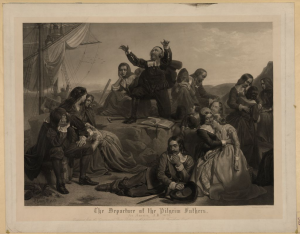For those of you who know me–know I LOVE history and helping children build background in this area. It is not complicated but it does take some time to find the right resources to use. (This might be something your Instructional Facilitator could help you with–hint hint)
Primary Sources are documents, songs, poems, photographs or paintings and artifacts that was written or created during the time you are studying. These items offer a view into the historical time period or culture you are studying. Realia refers to everyday objects of a time or culture that may be authentic or not but can certainly impact your students by helping them to “see” and make connections. (Ex. 2nd Grade bringing in Sugar Skulls during their study of the Mexican Tradition or baskets when studying Native Americans)
There are three main types of Primary Sources or Realia that can be used which include: 1) Original Documents 2) Creative Works and 3) Relics or Artifacts. Original documents include letters, diary excepts, interviews, speeches, news film, court records, autobiographies, etc. Creative Works include the art pieces, music, drama, novels and poetry. Artifacts can include buildings, clothing, furniture, pottery, etc.
I mentioned with my post on inferences that you can find primary sources online through the National Archives, Library of Congress, NC Museum of History, etc. I wanted to get you ready for the next few months with some great places to begin using Primary Sources. Here are common topics around this time of year and AWESOME documents to accompany your study.
4th Grade BLUE- Dust Bowl This site has photographs, lessons, and ideas
Thanksgiving Photographs/Documents and Teaching Ideas
3-5 resources Thanksgiving– the pictures could be used with any grade level
I know you are looking at this and thinking–KELLY THIS YOU HAVE GOT TO BE KIDDING. But actually, not so much! Think about this lesson:
 click on this photograph and it take you to a larger version.
click on this photograph and it take you to a larger version.
Show this photograph and have students discuss with a partner. What do they see? What are the people doing? The are simply sharing what they see. Have a set of partners pair up with another set of partners and discuss their ideas. Bring together whole group and have students share out what they see.
After you have about 10 items on your list–stop them and tell students you are going to look deeper at their list. You will have things on the list like: a woman is fainting, a man has his hand on his head, a book is open, etc. It will be normal every day things–not spectacular but that is okay.
Say to the student–It is time to make some inferences about what we are seeing. Why do you think the lady is fainting? What evidence do you have to support that? Why does the man have his hand on his head? How is he feeling? How do you know?
As you make inferences–if no one has noticed the title–point this out and ask what further information this provides us as the viewers. How does the title change what we think about the woman fainting–what reasons does a voyage make you think about? Continue discussing and asking questions.
Finally, you have went through this list and have lots of inferences. You might stop there because your students struggled but what if you go a step further and ask–So, now that we have all these inferences–what conclusions can we draw from this about the Pilgrims Voyage? Help students put ideas together such as the man with his hand on his head was feeling bad and maybe sick–the lady is fainting so this might help us draw the conclusion that many people got sick on the journey. Make a list as students come up with conclusions. This list would be great to investigate or research to see if they were right.
Remember that inferences and conclusions are not easy but with modeling and visuals–it is much easier. AND if this is HARD–GREAT!! Know that it takes a lot of wrong answers to get to a right one and most of all a student who is engaged and struggling is more productive than a student who already knows the answer is regurgitating the info back to you.
I would love for you to try a Primary Source lesson and let me know how it goes! I will be happy to help you find resources if you need me to do that! GOOD LUCK! Can’t wait to hear some great things from you!